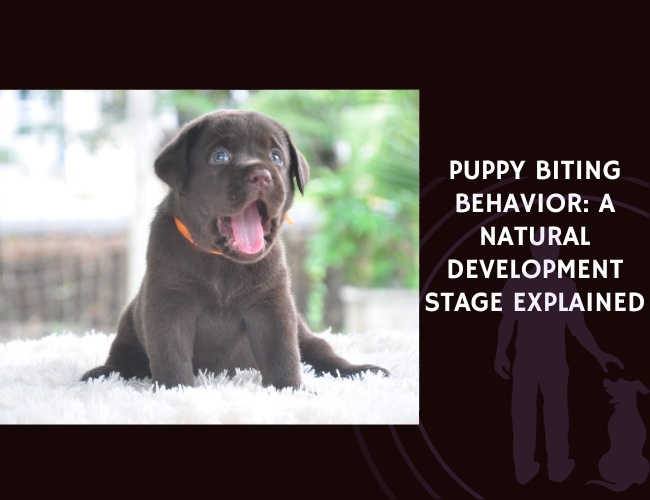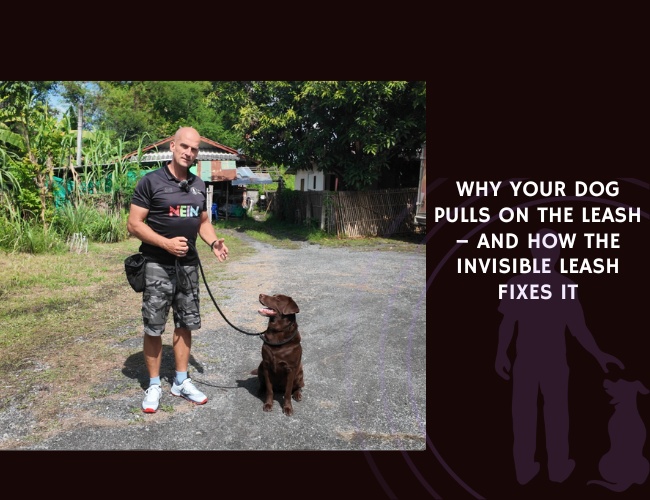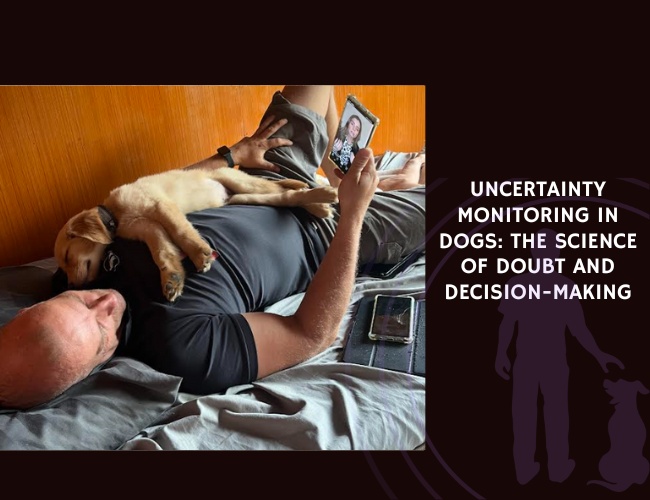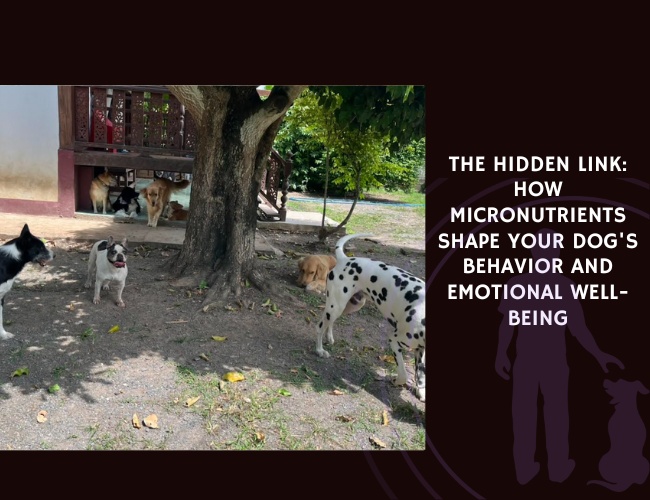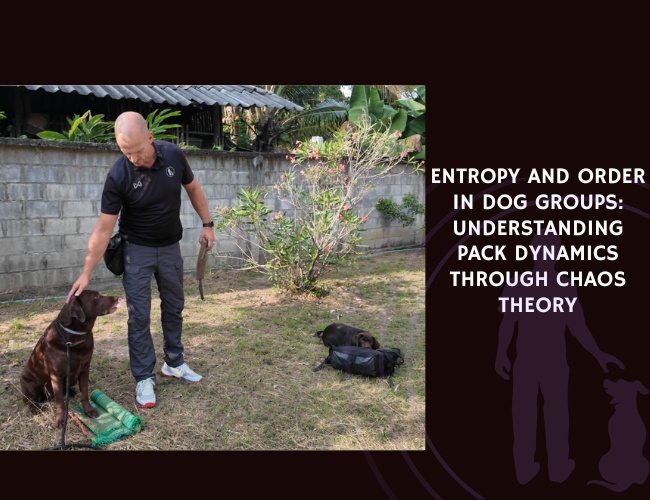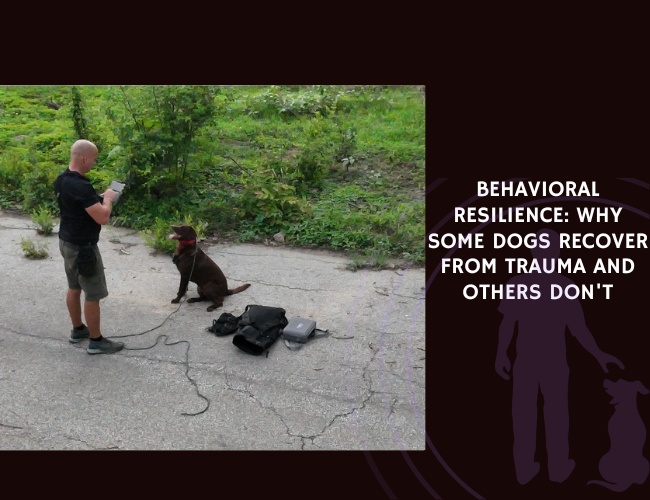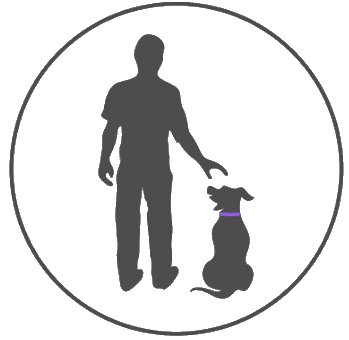Understanding Natural Puppy Behavior
Exploration through Mouth and Teeth as a Natural Developmental Process
Puppies, like human infants, explore their world with their mouths. This natural developmental process is crucial for their growth and understanding. From a young age, puppies are introduced to new textures, shapes, and tastes by mouthing objects, people, and other animals. This oral exploration is not merely a playful activity; it is an essential part of their sensory development.
During the first few weeks of life, puppies rely heavily on their sense of smell and taste to gather information about their surroundings. Their mouths serve as a primary tool for identifying objects and understanding their environment. This behavior, which might sometimes be perceived as nipping or biting, is simply a puppy’s way of learning and adapting to their new world.
Role of Oral Exploration in Learning About Environment
As puppies grow, their exploration through mouthing evolves into a method for testing and understanding boundaries. By biting, chewing, and gnawing on various objects, puppies learn what is edible, what might be harmful, and what is safe. This process is critical for cognitive development and helps puppies develop their problem-solving skills.
Puppy mouthing also plays a role in developing social skills. When puppies interact with their littermates, they engage in play that includes gentle biting and nipping. These interactions are a fundamental part of learning social hierarchy and appropriate behavior within their pack. Through these experiences, puppies learn how to effectively communicate with other dogs and humans.
Connection Between Biting and Early Development Stages
It is common for puppy owners to be concerned about biting, but understanding its connection to early development stages can help alleviate these concerns. In the early stages of life, puppies go through phases of rapid growth and development. During this time, biting serves multiple purposes:
- Teething Relief: As puppies transition from milk teeth to adult teeth, they experience discomfort and pain. Chewing and biting help to alleviate this sensation.
- Boundary Testing: Puppies use biting to test boundaries with their littermates, humans, and other animals. Through these interactions, they learn what is acceptable behavior and what is not.
- Play: Biting is also a natural part of play. It allows puppies to practice their hunting and fighting instincts in a safe and controlled manner.
- Communication: Biting can be a form of communication. Puppies might bite to express excitement, get attention, or signal that they need something, such as food or a bathroom break.
Recognizing these behaviors as natural developmental processes can help puppy owners respond appropriately and support their pets through these stages. By providing proper outlets for this behavior, such as chew toys and structured playtime, owners can guide their puppies towards healthy and acceptable forms of exploration.
As your puppy continues to grow, it is crucial to understand the importance of bite inhibition. This skill is typically learned from interactions with the mother and littermates, and it helps puppies develop control over their bite force. Proper bite inhibition is essential for ensuring safe and positive interactions with humans and other animals in the future.
The Importance of Bite Inhibition
Learning Bite Control From Mother and Littermates
Bite inhibition refers to a puppy’s ability to control the force of their bite. This essential skill is primarily learned during early interactions with their mother and littermates. These early social interactions provide a natural training ground where a puppy learns the boundaries of acceptable biting behavior.
During play, if a puppy bites too hard, the mother or littermate will respond immediately. Often, this response involves yelping or pulling away, signaling that the bite was too forceful. Consistent feedback from these interactions teaches the puppy to adjust the pressure exerted during future bites. This early learning stage is crucial for developing bite control that will serve them throughout their life.
How Play Interactions Teach Bite Force Regulation
Play is a fundamental aspect of a puppy’s development, offering numerous opportunities for learning bite regulation. Rough-and-tumble play sessions with their siblings are not just physical exercises but also crucial developmental experiences. When puppies engage in these play bouts, they naturally explore the boundaries of their bite force.
For instance, when a puppy bites too strongly during play, the bitten littermate will typically yelp and withdraw from the game. This interaction acts as a clear indication to the biter that their action was inappropriate. Over time, through repeated, consistent play interactions, the puppy begins to understand the appropriate force for biting. This learning process helps them differentiate between friendly play and actual aggression, an understanding pivotal for future social interactions.
Natural Consequences of Hard Biting During Puppy Play
The immediate reactions to hard biting provide a natural and effective form of feedback for puppies. As mentioned, a common response to a painful bite is a loud yelp followed by a cessation of play. This reaction, observed and experienced consistently, teaches puppies the adverse consequences of exerting too much pressure.
Additionally, hard biting might lead to the puppy being socially ostracized, even briefly. When a littermate refuses to engage with a puppy due to hard biting, it fosters an understanding that gentle play maintains social bonds, while hard biting disrupts them. Consequently, puppies learn to self-regulate their bite force to maintain positive interactions and avoid isolation.
Through understanding these dynamics, owners can better appreciate the importance of fostering appropriate bite inhibition in their puppies. Recognizing the value of these natural lessons underscores the significance of a puppy’s early developmental environment. This awareness empowers owners to support and reinforce bite regulation training effectively, setting the groundwork for well-adjusted adult behavior.
Transitioning from understanding bite inhibition, the upcoming discussion will address teething and its impact, exploring the development timeline and how it affects a puppy’s behavior.
Teething and Its Impact
Timeline of Teeth Development from Puppy to Adult Teeth
Teething is a crucial phase in a puppy’s life. It generally starts when they are about three weeks old and continues until around six to eight months of age. Initially, puppies are born without teeth. At about three weeks, their first set of teeth, known as milk or baby teeth, begin to emerge. This set includes 28 tiny, sharp teeth designed to help them transition from nursing to solid food.
Around 12 weeks of age, the baby teeth start to fall out, making way for the adult teeth. By the time a puppy reaches six to eight months, their adult teeth, totaling 42, should have completely emerged. This process includes the development of incisors, canines, premolars, and molars, which are crucial for the dog’s future diet and overall oral health.
Physical Discomfort During Teething Process
The teething process can bring significant physical discomfort for puppies. As their baby teeth emerge and then fall out to make way for adult teeth, puppies experience gum irritation and swelling. You may observe increased drooling and a noticeable decrease in appetite due to sore gums. This is a challenging time for the young dogs, and they will seek ways to alleviate this discomfort.
Owners can assist by offering safe and appropriate chew toys that can massage their pup’s gums and provide relief. Cold or frozen items can be especially soothing. Providing these items is essential, as offering the wrong kind of chew objects can cause dental issues and hazards.
Relationship Between Teething and Increased Chewing Behavior
Chewing is an instinctive solution for puppies dealing with the discomfort of teething. As the new teeth push their way through the gums, puppies often turn to chewing on various objects to ease the irritation. This behavior can be beneficial, as it helps the puppies’ teeth develop properly and can prevent future dental problems.
However, because puppies do not differentiate between appropriate and inappropriate objects to chew on, this period requires extra vigilance. Chewing on household items like furniture and shoes can result in significant damage and potential hazards to the puppy’s health if they ingest something harmful. It’s crucial to provide a variety of safe and durable toys specifically designed for teething puppies.
Puppy owners can also support this exploratory phase by removing any tempting, non-appropriate chewable items from their puppy’s environment. Offering positive reinforcement when the puppy chews on the correct items can aid in shaping this behavior.
Understanding the teething process better equips puppy owners to handle this phase with empathy and practical solutions. This period is temporary and, with the right support, can be a constructive part of a puppy’s growth.

Effective Training Strategies
Proper Use of Redirection Techniques with Appropriate Toys
During the teething phase, puppies instinctively chew to alleviate discomfort. It is vital to redirect this chewing behavior towards appropriate toys to prevent damage to furniture and personal items. Choose durable, non-toxic toys designed specifically for teething, such as rubber chew toys, teething rings, and interactive toys that dispense treats. These not only provide an appropriate outlet for chewing but also stimulate mental engagement.
Redirection should be consistent. If a puppy begins chewing on an inappropriate item, replace it with a suitable toy and encourage interaction with the new object. Use positive reinforcement to reward the puppy when they choose the correct toy. This method helps puppies learn which items are appropriate for chewing and reinforces good behavior through positive experiences.
Implementing Vocal Cues and Consistent Feedback
Vocal cues and consistent feedback are essential in guiding a puppy’s behavior. When a puppy bites or chews on something inappropriate, a short, high-pitched “ouch” or “no” can effectively communicate discomfort or disapproval, mimicking the reactions of littermates during play. Immediately after the vocal cue, redirect the puppy to a suitable toy and praise them when they start chewing on the correct item.
Consistency is key in this process. All family members should use the same vocal cues and follow the same steps for redirection and reinforcement. This consistency helps the puppy quickly understand expectations and adapt their behavior accordingly.
Importance of Structured Playtime and Exercise
Structured playtime and ample exercise are crucial in managing puppy behavior. Regular physical activity helps burn off excess energy and reduces the likelihood of destructive chewing and biting. Plan daily play sessions that include activities such as fetch, tug-of-war, and interactive toys that challenge your puppy both physically and mentally.
Additionally, incorporating training exercises into play sessions can further reinforce appropriate behaviors. Use this time to practice commands like “sit,” “stay,” and “leave it,” integrating positive reinforcement techniques such as treats and praise. Structured play and training not only curb undesirable behaviors but also strengthen the bond between owner and puppy, fostering trust and communication.
Creating a balanced routine with designated playtime, training, and rest periods ensures that puppies receive the mental and physical stimulation they need while also learning to settle down and relax when required. This balance helps prevent overstimulation and encourages a calm, well-mannered demeanor.
By employing effective training strategies, such as proper redirection techniques, consistent vocal cues, and structured playtime, owners can guide their puppies through the challenging teething phase, promoting positive behavior and a harmonious household environment.
To further enhance this developmental stage, managing environmental factors is essential. Creating suitable play environments and recognizing signs of overstimulation can support a puppy’s growth and adaptation.
Managing Environmental Factors
Recognition and Prevention of Overstimulation
Overstimulation in puppies can lead to behavioral issues, including increased biting and difficulty focusing during training sessions. Recognizing the signs of overstimulation and learning how to prevent it is paramount in managing a puppy’s environment.
Puppies tend to exhibit certain behaviors when they become overstimulated:
- Excessive biting and mouthing
- Hyperactivity, such as uncontrollable running or jumping
- Barking or whining
To prevent overstimulation:
- Monitor Playtime: Keep sessions short and avoid engaging in overly exciting activities close to bedtime.
- Take Breaks: Regular breaks during play allow puppies to process their experiences and reduce the risk of overstimulation.
- Read Body Language: Learn to recognize when your puppy is becoming overly excited or tired. This will help you step in before they become overwhelmed.
Creating Appropriate Play Environments
The environment in which a puppy plays significantly impacts their behavior. A well-structured environment encourages positive behavior and reduces stress and overstimulation.
Safe and Stimulating Play Areas
A safe play area should be free from hazards and provide a variety of toys to keep the puppy engaged:
- Use Puppy Gates: These can help create a secure area where the puppy can play safely without supervision.
- Provide a Range of Toys: Include chewing toys, interactive toys, and puzzle feeders to cater to their developmental needs.
- Rotate Toys: To maintain interest, periodically swap out toys to keep the pup mentally stimulated.
Supervised Socialization
Controlled socialization with other dogs and humans is crucial for a puppy’s development:
- Puppy Playdates: Arrange playdates with well-behaved and vaccinated dogs to teach your puppy social etiquette.
- Observant Interaction: Always supervise interactions to prevent negative experiences that could lead to fear or aggression.
Balance Between Socialization and Rest Periods
Adequate rest is as important as active play for a puppy’s development. Striking the right balance between socialization and rest periods ensures the puppy remains well-adjusted and healthy.
Establishing a Routine
A consistent routine helps puppies understand what to expect, reducing anxiety and fostering security:
- Regular Meal Times: Stick to a schedule for feeding to help establish a daily rhythm.
- Predictable Play Times: Designate specific times for play and exercise to provide structure.
Prioritizing Rest
Rest periods are essential for puppies to consolidate what they’ve learned and to avoid burnout:
- Comfortable Resting Areas: Create cozy and quiet spaces where the puppy feels safe to nap undisturbed.
- Enforced Naps: If your puppy struggles to settle down, gently encourage nap times by placing them in their crate or designated bed.
Managing environmental factors efficiently is a key component in facilitating the smooth development of your puppy. By understanding the balance between play and rest, and paying attention to the stimuli influencing your puppy, you pave the way for a well-behaved and content pet. Ensuring these practices also readies your puppy for the training and experiences that will come throughout their life.
Long-term Solutions and Support
Importance of Consistent Training Approaches
Consistency in training is critical to fostering well-behaved and happy puppies. As puppies grow, their learning processes rely heavily on repetitive and predictable patterns. Consistent training approaches ensure that the puppy understands what is expected, leading to reduced confusion and more reliable behavior.
There are several key elements to maintaining consistency in training:
- Routine: Establish regular training sessions at the same time each day. Consistency in timing helps puppies become accustomed to learning.
- Commands: Use the same commands for specific actions every time. Avoid using different phrases for the same action, which may confuse the puppy.
- Rewards: Consistently reward desired behaviors with the same form of reinforcement, such as treats, praise, or playtime. This helps the puppy associate specific actions with positive outcomes.
- Responses: Address undesirable behaviors promptly and in a similar manner each time they occur. This helps the puppy understand which behaviors are not acceptable.
Role of Proper Socialization in Behavior Development
Proper socialization plays a pivotal role in a puppy’s behavioral development. Socialization involves exposing the puppy to a variety of environments, people, and other animals in a controlled and positive manner. This process helps create well-adjusted and confident adult dogs.
Key aspects of socialization include:
- Introducing New Experiences: Gradually expose the puppy to different sounds, sights, and textures. This could involve trips to parks, car rides, or visits to pet-friendly stores.
- Meeting People: Encourage interactions with a diverse range of individuals, including men, women, children, and elderly. Ensure these encounters are gentle and positive.
- Interacting with Other Dogs: Arrange playdates with other well-behaved dogs. Group classes or puppy socials are excellent opportunities for controlled interactions.
Proper socialization reduces the risk of fear, anxiety, and aggression in adult dogs. It also enhances their adaptability to new situations, making them more comfortable and safer companions.
When to Seek Professional Help for Persistent Issues
Despite best efforts in training and socialization, some puppies may develop persistent behavioral issues that require professional intervention. Recognizing when to seek help is crucial for the well-being of both the puppy and the owner.
Indicators that professional help may be needed include:
- Aggression: Persistent aggressive behavior towards people or other animals.
- Anxiety: Signs of severe anxiety, such as excessive barking, destructive behavior, or self-harm when left alone.
- Inability to Learn: If the puppy consistently does not respond to training despite consistent efforts.
- Health Concerns: Behavioral changes that may be linked to health issues, such as sudden aggression or lethargy.
Professional help can come from various sources, including:
- Veterinarians: To rule out any underlying health issues that may be causing behavioral problems.
- Certified Dog Trainers: For expert training techniques tailored to the puppy’s specific needs.
- Animal Behaviorists: Specialists who provide in-depth behavioral assessments and treatment plans.
Seeking professional guidance ensures that persistent issues are addressed effectively, promoting a healthier and happier relationship between the puppy and owner.
Adopting these measures ensures that puppies grow up into well-mannered, social, and happy adult dogs. By focusing on consistent training, proper socialization, and knowing when to seek professional assistance, owners can provide the best foundation for their puppies’ long-term development.

